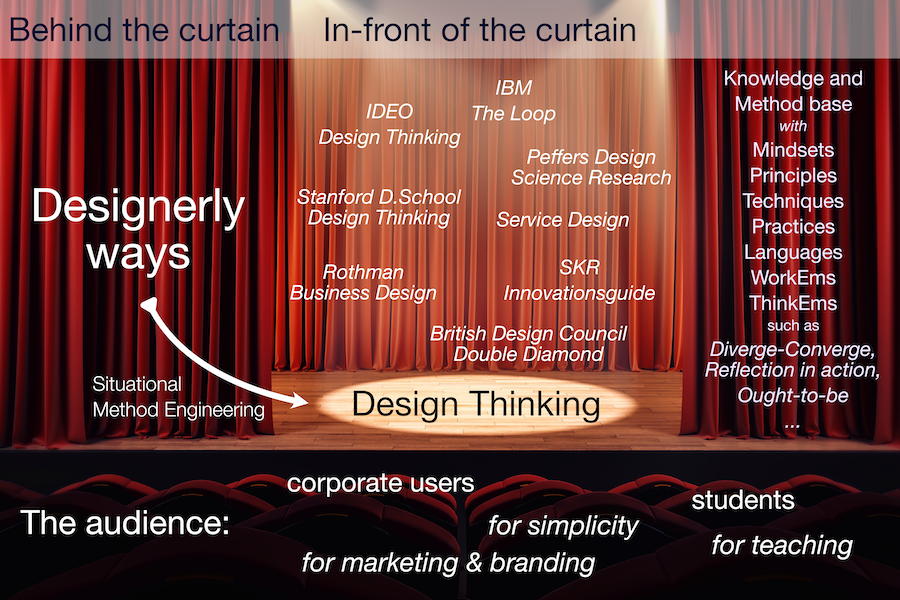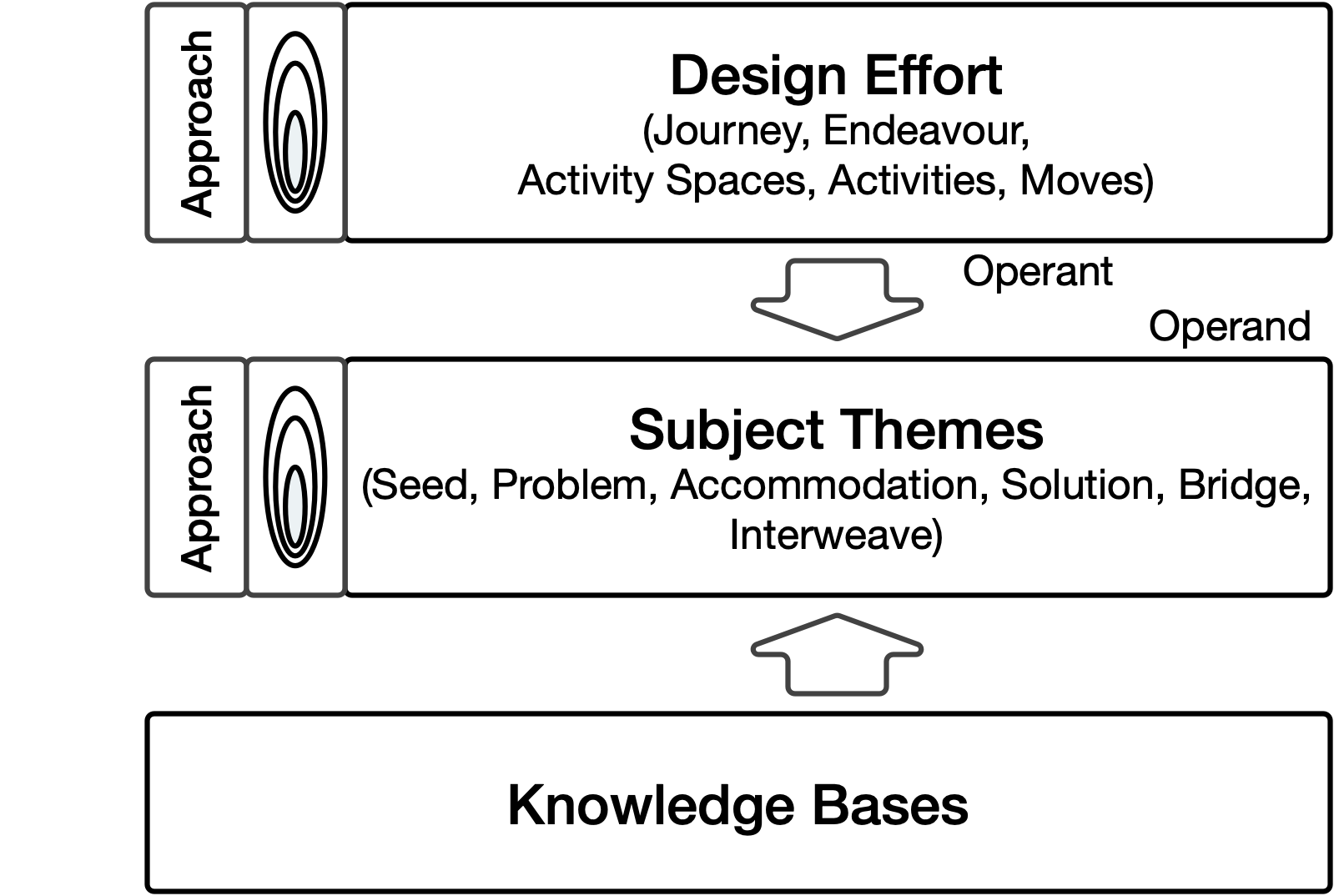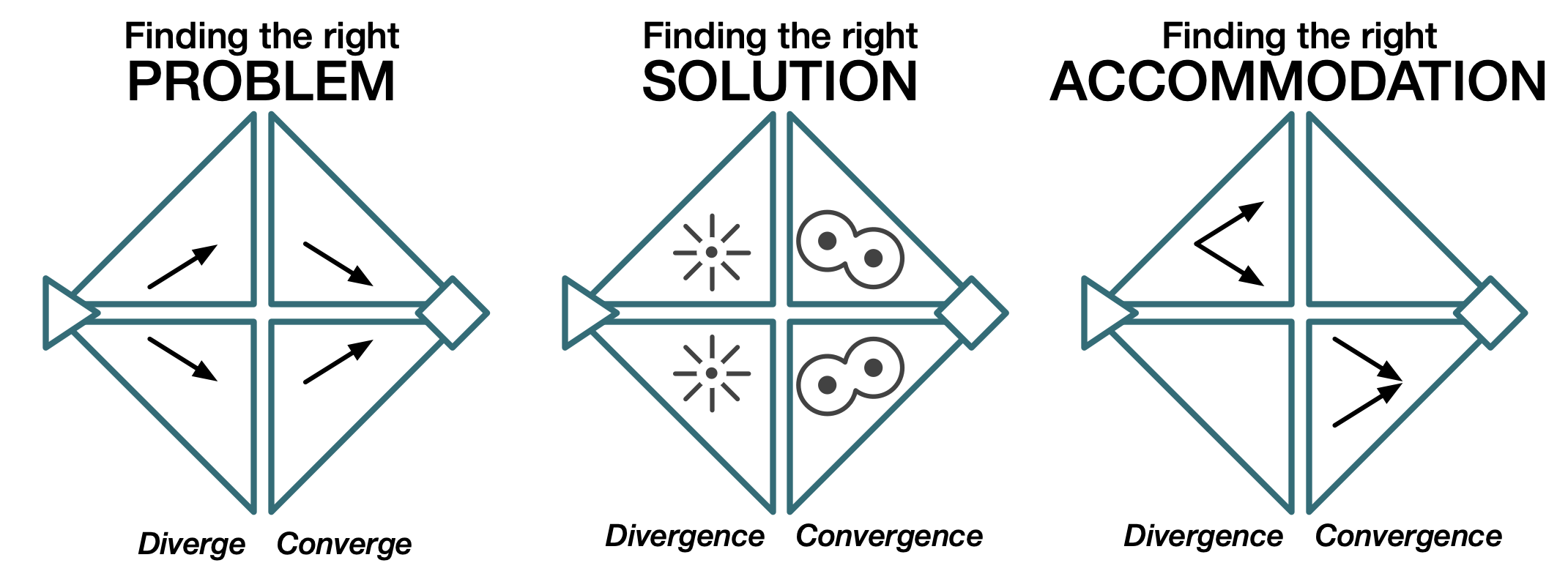Sharing and Blog
WorkEm help you improve who you are, what you do and what you aspire to.
Explaining Design Thinking - Distinctions that matter
The Design Thinking approach (DT) to design, innovation, and problem-solving has been around for a long time in the design community. DT is gaining traction in new fields, such as developing societies, strategies, and businesses. Non-designers have also started to embrace DT.
The wider applications and experiences gained from using Design Thinking from organisations such as Stanford Design School, IDEO, or Design Council have, however, generated widespread critique.
"Critics have argued that its short-term focus on novel and naive ideas has resulted in unrealistic and ungrounded recommendations."
Other examples of critique: https://www.linkedin.com/pulse/understanding-what-missed-gk-vanpatter/,
https://www.subtraction.com/2018/04/02/in-defense-of-design-thinking-which-is-terrible/.
As a researcher and practitioner using design and as a method developer, I try to find explanatory models for such critique. Are the critiques well founded or expressions of "not-invented-here"?
The literature about Design Thinking, its pros and cons, is vast. However, some aspects or rather distinctions that matter and are understated, which can explain the tensions between design approaches, design practitioners and theorists.
Short descriptions of the distinctions that matter
- Designerly Ways of Doing and Thinking (behind the curtain) vs Design Thinking (in front of the curtain)
- Design (verb) vs Design (noun)
- The space between Is and ought-to-be, or problem and solution.
There exist many variants of design thinking. Can any variant offer the optimal or one-and-only way of doing design? The short answer is No. The designerly ways of doing and thinking are too many and varied. How can the existence of so many variants of Design Thinking be explained?
One powerful explanatory model is based on the premise that there exist large bodies of designerly practices, thinking, tools, principles, philosophies etc. For simplicity, let's bundle them into a Designerly Ways Method base which exists embodied in designers, embedded in tools and explicit in design literature.
This Designerly Ways Method base exists "behind the curtain" and provides the source for organisations to create tailored design methods or approaches for specific purposes and target audiences "in-front of the curtain".
This model explains the emergence of variants based on the different organisation's goals, products, and marketing. It also explains why they look similar since they are based on the same designerly method base and why they are simplifications since they include only a select set of designerly features. Of course, a creator of a DT variant chooses wisely the parts of their DT.
Recognising organisational and commercial aspects of DTs can change general critique to discussions about why, when, and how a particular DT makes sense.
These are unfortunate simplifications since there are quite many design moves that can be made that operate on each part of a design puzzle.
Experienced designers will likely feel uncomfortable and constrained by the embedded process flow since they have other designerly ways of approaching different design topics. This may lead to critics of simple design thinking approaches.
A clearer separation between designing (verb, operant) and the design subjects (noun, operand) in DT promise to address such critiques.
The third distinction is less known and discussed, the space between IS and Ought-to-be, or Problem and Solution.
In philosophy, the space is called thirdness; otherwise, it goes under other names, such as transition or intervention. This space is crucial to address since no Solution or Ought to be can come into existence if nothing is done. For each pair of problem-situation and solution-situation, there exist many ways to transition between them, i.e. there is a third search space and part of any design candidate.
In the designerly world, we find transition design, theory of change or benefits realisation. Elsewhere, we find road mapping, CIMO, interventions, enactment, deployment, diffusion of invention, intention to use technologies, acceptance, forward chaining, and backward chaining. All address the space in between, the Accommodation space.
The recognition of the third Accommodation space adds, in a simple way, more of the omitted parts of the Designerly method base.
When you subscribe to the blog, we will send you an e-mail when there are new updates on the site so you wouldn't miss them.
By accepting you will be accessing a service provided by a third-party external to http://workem.com/




Comments